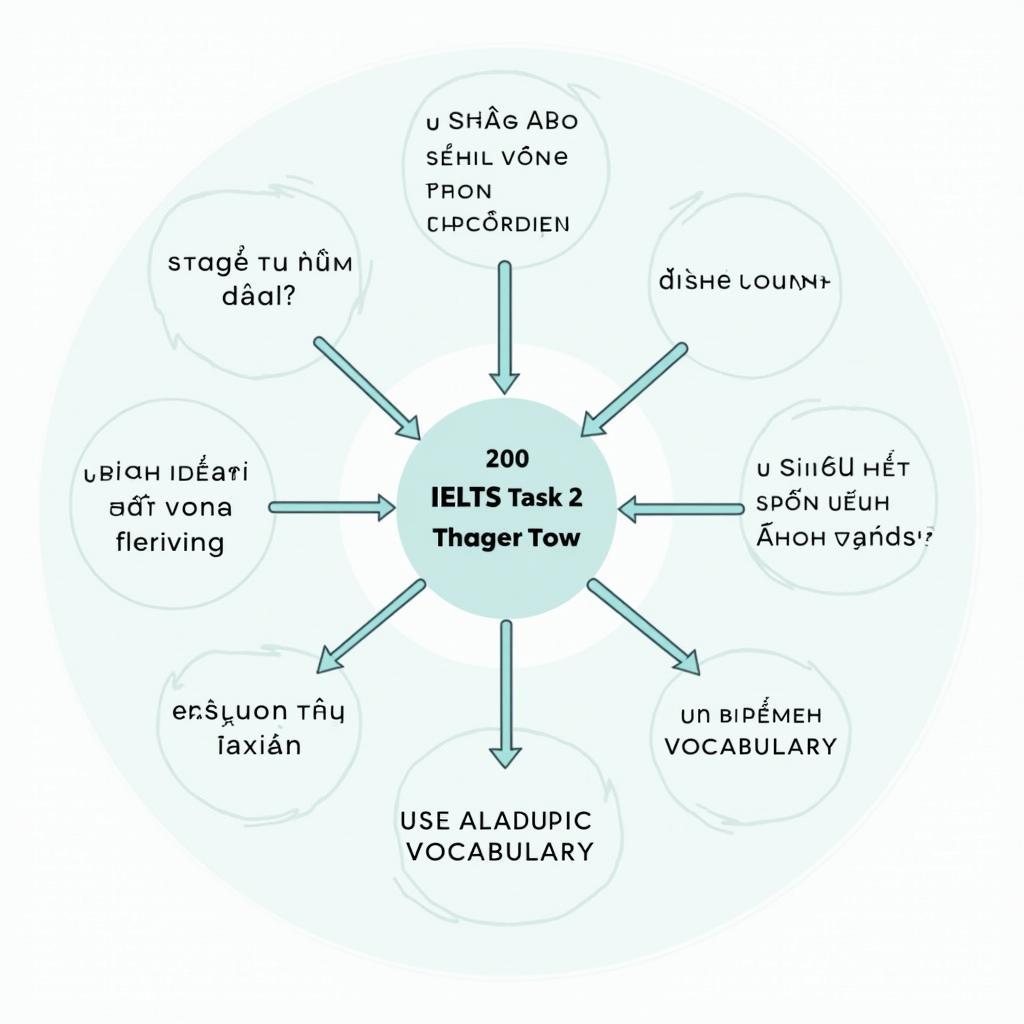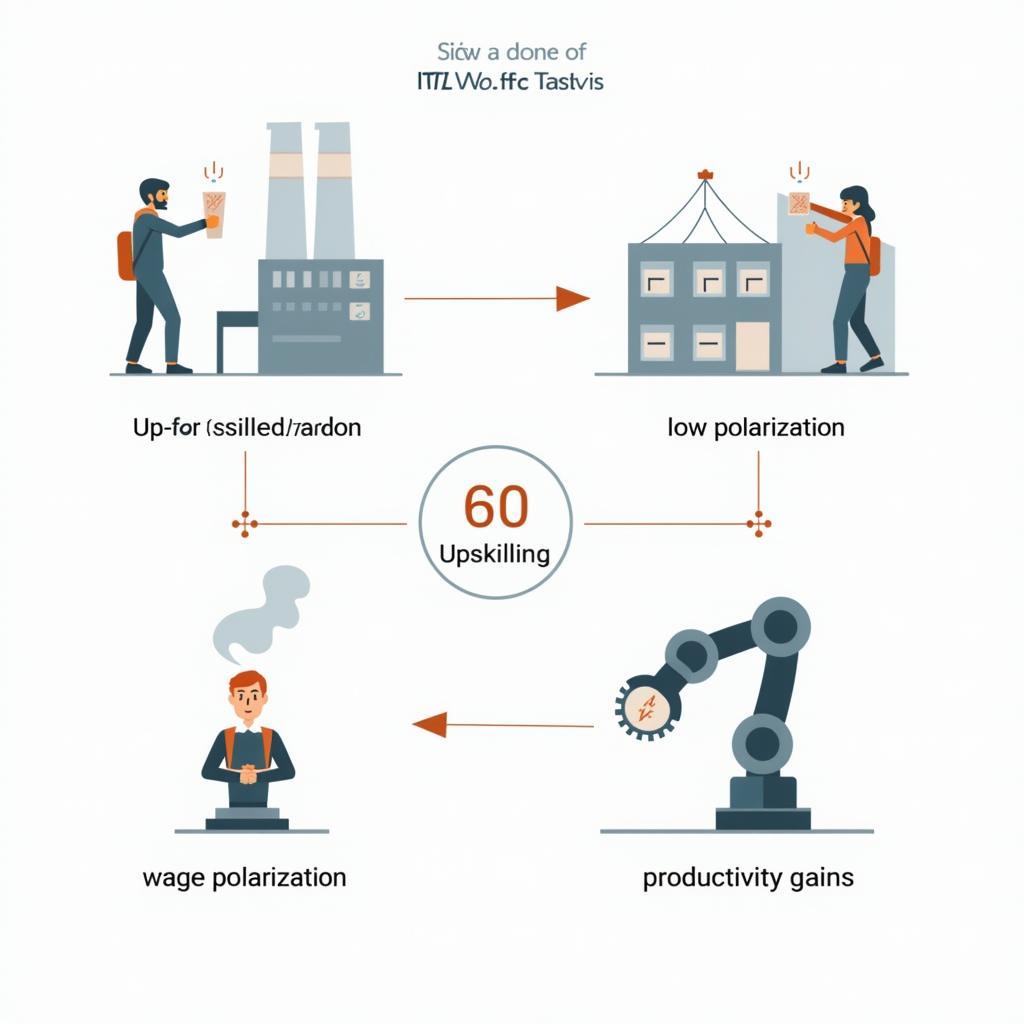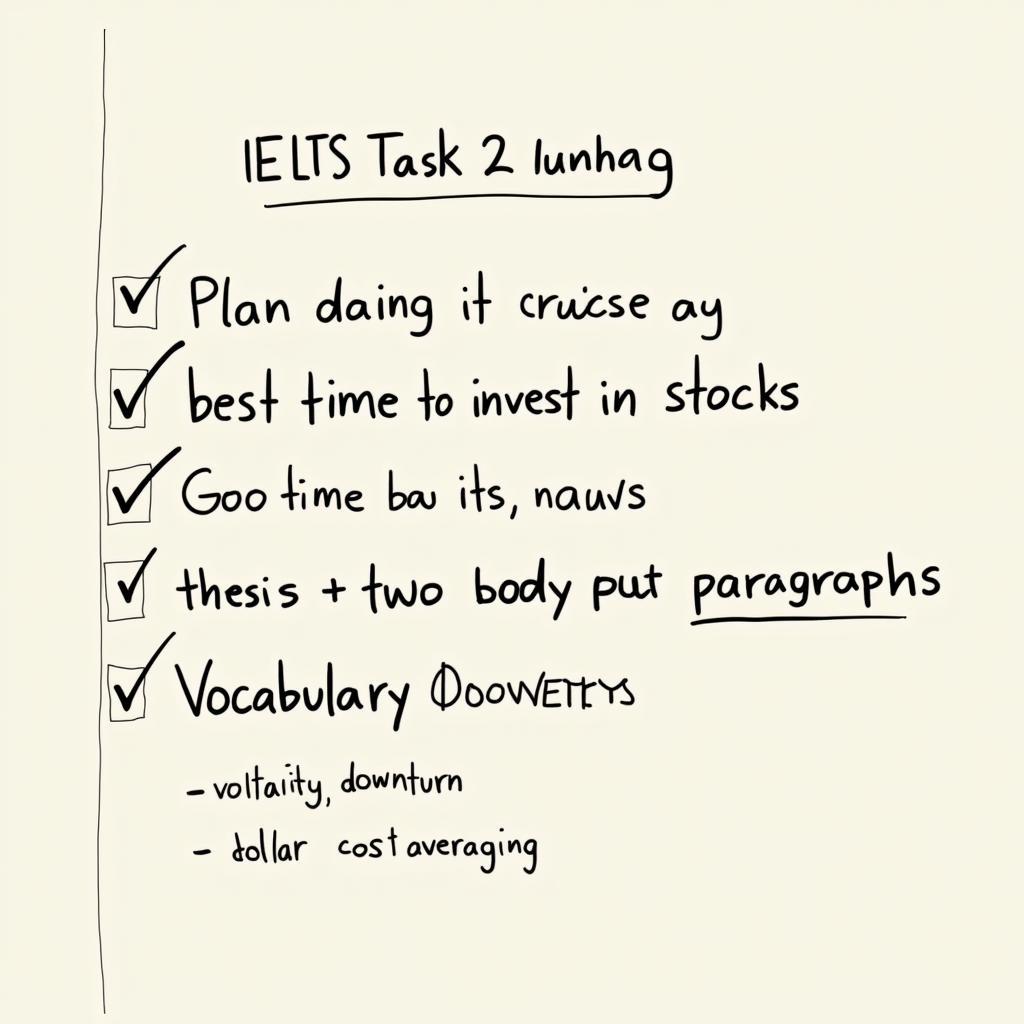Mở bài
Chủ đề Social Media Impact On Mental Health xuất hiện thường xuyên trong IELTS Writing Task 2 vì gắn liền với xu hướng công nghệ, giới trẻ và sức khỏe cộng đồng. Những câu hỏi xoay quanh lợi – hại của mạng xã hội, tác động đến giao tiếp trực tiếp, hay mối liên hệ với lo âu và trầm cảm rất “đúng tủ” để các trung tâm khảo thí kiểm tra khả năng lập luận logic, dùng bằng chứng, và quản lý giọng điệu học thuật. Trong bài viết này, bạn sẽ nhận được: 3 bài mẫu hoàn chỉnh (Band 5-6, 6.5-7, 8-9), phân tích chấm điểm chi tiết theo 4 tiêu chí chính thức, chiến lược triển khai ý, cùng danh sách từ vựng – cấu trúc ăn điểm và checklist tự đánh giá trước – trong – sau khi viết.
Nội dung bài viết
- Mở bài
- 1. Đề Writing Part 2 về social media impact on mental health
- 2. Bài mẫu Band 8-9 cho chủ đề social media impact on mental health
- Phân tích Band điểm
- Các yếu tố giúp bài này được chấm điểm cao
- 3. Bài mẫu Band 6.5-7
- Phân tích Band điểm
- So sánh với bài Band 8-9
- 4. Bài mẫu Band 5-6
- Phân tích Band điểm
- Những lỗi sai của bài – phân tích & giải thích
- Cách Cải Thiện Từ Band 6 Lên Band 7
- 5. Từ vựng quan trọng cần nhớ
- 6. Cấu trúc câu dễ ăn điểm cao
- 7. Checklist Tự Đánh Giá
- Kết bài
Một số đề thực tế/biến thể phổ biến được trích dẫn rộng rãi trên các nguồn uy tín (IELTS Liz, IELTS-Blog, British Council) gồm:
- Many people believe that social networking sites (such as Facebook) have a negative effect on individuals and society. To what extent do you agree or disagree?
- Some people think that the use of social media is replacing face-to-face interaction. Do the advantages outweigh the disadvantages?
- There is growing concern about the effects of social media on young people’s mental health. Discuss the causes and possible solutions.
Để thấy sự tương đồng về cách lập luận công nghệ – xã hội, bạn có thể tham khảo thêm một chủ đề liên quan đến công nghệ và xu hướng tranh luận: Computers becoming more intelligent than humans: positive or negative trend tại liên kết nội bộ sau đây: Computers becoming more intelligent than humans: positive or negative trend.
1. Đề Writing Part 2 về social media impact on mental health
Some people argue that social media is directly responsible for the rise of anxiety and depression among teenagers. To what extent do you agree or disagree?
Dịch đề: Một số người cho rằng mạng xã hội là nguyên nhân trực tiếp dẫn tới sự gia tăng lo âu và trầm cảm ở thanh thiếu niên. Bạn đồng ý hay không đồng ý ở mức độ nào?
Phân tích đề bài:
- Dạng câu hỏi: Opinion (Agree/Disagree) – Bạn cần nêu rõ lập trường và nhất quán trong toàn bài.
- Từ khóa quan trọng:
- “directly responsible”: nguyên nhân trực tiếp – bạn cần làm rõ mối quan hệ nhân quả, tránh nói chung chung.
- “anxiety and depression”: các thuật ngữ sức khỏe tinh thần – dùng từ chính xác, tránh phóng đại.
- “teenagers”: phạm vi nhóm đối tượng – dẫn chứng và ví dụ cần phù hợp lứa tuổi.
- Lỗi thường gặp:
- Lạc đề sang “addiction” hay “privacy” mà quên kết nối với mental health.
- Nêu nhiều ý nhưng thiếu luận cứ, thiếu ví dụ cụ thể.
- Giọng điệu cảm tính, dùng số liệu bịa đặt.
- Cách tiếp cận chiến lược:
- Chọn một lập trường rõ ràng (đồng ý phần lớn nhưng có điều kiện; hoặc phản biện “không trực tiếp” mà qua trung gian như thời gian sử dụng, so sánh xã hội).
- Chia thân bài theo 2 trục: cơ chế ảnh hưởng (social comparison, cyberbullying, sleep displacement) và điều kiện trung gian/biện pháp giảm thiểu (digital literacy, parental mediation, platform design).
- Dùng ví dụ khái quát có cơ sở, tránh số liệu cụ thể không kiểm chứng.
 Tác động mạng xã hội tới sức khỏe tinh thần trong IELTS Writing Task 2
Tác động mạng xã hội tới sức khỏe tinh thần trong IELTS Writing Task 2
2. Bài mẫu Band 8-9 cho chủ đề social media impact on mental health
Bài Band 8-9 thể hiện lập trường nhất quán, lập luận logic, ví dụ sát bối cảnh, và kiểm soát ngôn ngữ học thuật tinh tế.
Bài luận (khoảng 300 từ):
While social networking platforms are often blamed for an epidemic of teenage anxiety and depression, it is more accurate to argue that they act as powerful amplifiers of existing vulnerabilities rather than as a single, direct cause. Adolescents are particularly sensitive to status and belonging; when feeds are algorithmically curated, they are repeatedly exposed to idealized images that foster comparative deprivation. Over time, such exposure can encourage rumination and body dissatisfaction, both of which are closely linked to low mood.
That said, the mechanism is conditional, not deterministic. Excessive screen time displaces sleep and outdoor activity, which are protective factors for mental health. In addition, features like public like-counters and ephemeral stories can intensify fear of missing out. Yet, these risks are unevenly distributed: teenagers with strong offline support, balanced routines, and digital literacy often use social media to find community, seek help, or access psychoeducational content. In other words, the platforms may raise the volume on whatever is already present in a young person’s life.
Rather than indicting social media as the direct culprit, a more constructive view is to target mediators. Schools can teach media literacy and emotional regulation; parents can model healthy digital hygiene and co-create rules for devices at night; platforms can refine design, for example by hiding public metrics, throttling harmful content, and prompting breaks after prolonged use. These measures do not deny the hazards. Instead, they recognize that risk emerges from an interaction between design choices and developmental needs.
In conclusion, I partly agree with the claim: social media can contribute to teenage anxiety and depression, but primarily by exacerbating pre-existing pressures and reducing sleep and movement. Assigning “direct responsibility” overlooks both individual differences and the capacity for reform. A targeted, evidence-informed response is therefore more persuasive than blanket blame.
Phân tích Band điểm
| Tiêu chí | Band | Nhận xét |
|---|---|---|
| Task Response (Hoàn thành yêu cầu) | 8.5 | Lập trường “partly agree” rõ ràng, phát triển theo cơ chế – điều kiện – giải pháp; kết luận phản hồi đúng từ “directly responsible”. Thiếu số liệu vẫn thuyết phục nhờ lập luận. |
| Coherence & Cohesion (Mạch lạc & Liên kết) | 8.5 | Bố cục 4 đoạn cân đối, mỗi đoạn có chủ đề rõ. Liên kết logic giữa rủi ro – điều kiện – giải pháp; dùng đối lập “deterministic vs conditional” tạo mạch. |
| Lexical Resource (Từ vựng) | 8.5 | Từ vựng học thuật tự nhiên: algorithmically curated, comparative deprivation, mediators, psychoeducational. Collocations chuẩn: digital hygiene, design choices. Hầu như không lặp từ. |
| Grammatical Range & Accuracy (Ngữ pháp) | 8 | Đa dạng cấu trúc: mệnh đề quan hệ, cụm phân từ, điều kiện giả định. Một vài câu dài nhưng kiểm soát tốt, dấu câu chính xác. |
Các yếu tố giúp bài này được chấm điểm cao
- Trả lời trực diện từ khóa “directly responsible”, tránh lạc đề.
- Giải thích cơ chế ảnh hưởng cụ thể (social comparison, sleep displacement).
- Lập trường cân bằng: thừa nhận rủi ro nhưng phân tích điều kiện trung gian.
- Từ vựng chuyên sâu nhưng tự nhiên, không phô trương.
- Ví dụ mang tính khái quát, phù hợp bối cảnh trường học – gia đình.
- Giải pháp khả thi ở ba tầng: nhà trường – phụ huynh – nền tảng.
- Câu kết “evidence-informed response” tổng hợp quan điểm chặt chẽ.
3. Bài mẫu Band 6.5-7
Đặc trưng: trả lời đúng trọng tâm, lý lẽ rõ, từ vựng/gram đủ tốt nhưng chưa thật tinh tế; ví dụ đôi khi chung chung.
Bài luận (khoảng 260 từ):
It is often claimed that social media causes mental health problems among teenagers. I agree that these platforms can worsen anxiety and depression, but I do not think they are the main cause in every case. Instead, they interact with other factors such as sleep, family support, and school pressure.
First, social media easily leads to comparison. When young people see classmates posting perfect photos or achievements, they may feel inferior and worry they are not doing well enough. This can create constant stress. Moreover, spending hours online late at night reduces sleep and exercise, which are important for emotional stability. In this sense, social media does not directly produce depression, but it increases the conditions that make depression more likely.
However, it is also true that social media can help. Many teenagers find supportive communities, learn coping strategies, or even contact helplines. If parents set healthy rules, like no phones in the bedroom after 10 p.m., and schools teach students how to evaluate online content, the negative effects can be reduced. Platforms can also hide like-counts or send reminders to take a break.
In conclusion, I partly agree with the statement. Social media can contribute to anxiety and depression, especially when it replaces sleep and real-life activities. Yet for many teenagers, the outcome depends on how they use it and whether adults guide them. A balanced approach that combines education, family routines, and better platform design is more realistic than simply blaming technology.
Phân tích Band điểm
| Tiêu chí | Band | Nhận xét |
|---|---|---|
| Task Response (Hoàn thành yêu cầu) | 7.0 | Trả lời rõ, có lập trường “partly agree”, có dẫn chứng hợp lý. Thiếu chiều sâu cơ chế so với Band 8-9. |
| Coherence & Cohesion (Mạch lạc & Liên kết) | 7.0 | Bố cục chuẩn 4 đoạn; liên kết hợp lý nhưng từ nối còn lặp; một số câu chuyển ý chưa thật tinh tế. |
| Lexical Resource (Từ vựng) | 6.5 | Từ vựng đủ dùng, ít thuật ngữ chuyên sâu; collocations an toàn (supportive communities, coping strategies). Độ đa dạng chưa cao. |
| Grammatical Range & Accuracy (Ngữ pháp) | 6.5 | Câu ghép, phức có nhưng cấu trúc chưa đa dạng; ít lỗi nhưng thiên về câu đơn. Dấu phẩy nhìn chung ổn. |
So sánh với bài Band 8-9
- Độ sâu lập luận: Band 8-9 nêu “mediators” và cơ chế cụ thể; Band 7 dừng ở mô tả hiện tượng.
- Từ vựng: Band 8-9 có collocations học thuật chuyên sâu; Band 7 dùng từ chung.
- Cấu trúc câu: Band 8-9 có câu phức đa tầng, đảo ngữ, cụm phân từ; Band 7 chủ yếu câu ghép – đơn.
- Kết luận: Band 8-9 tổng hợp quan điểm với ngôn ngữ nghiên cứu; Band 7 kết thúc chuẩn nhưng bớt sắc sảo.
 Bảng so sánh band điểm IELTS Writing Task 2 với tiêu chí chấm cụ thể
Bảng so sánh band điểm IELTS Writing Task 2 với tiêu chí chấm cụ thể
4. Bài mẫu Band 5-6
Đặc trưng: có ý nhưng phát triển thiếu chiều sâu; lỗi từ vựng, ngữ pháp, mạch lạc; ví dụ mơ hồ. Dưới đây cố tình giữ một số lỗi điển hình để bạn nhận diện.
Bài luận (khoảng 260 từ):
Many people think social media directly makes teenager have depression and anxiety. I partly agree, but I also believe it depends on how they use and who are guide them. In the other hand, social media sometimes give benefits.
Firstly, young people look at perfect photos and success stories and then they feel bad with themselves. This is making pressure and they compare too much. They spends long time on phones, especially at night, so sleep is reduce. Without enough sleep, mood become worse and students cannot focus in class. This lead to more stress and maybe depression.
However, social media also help teenagers to find friends or group who understand them. Some pages share mental health advice and hotlines. If parents set rules and teachers talk about using Internet, then problem can be control. Platforms should to hide like numbers and stop bad contents, so young people feel less pressure.
In conclusion, I think social media is not always directly responsible. It have negative effect when use too much and replace sleep or exercise. But with right guidance and balance, it can be useful tool. Therefore, we should not blame technology only, but try to use it on the right way.
Phân tích Band điểm
| Tiêu chí | Band | Nhận xét |
|---|---|---|
| Task Response (Hoàn thành yêu cầu) | 5.5 | Có trả lời đề nhưng lý lẽ nông, ví dụ chung chung; thiếu giải thích cơ chế rõ ràng. |
| Coherence & Cohesion (Mạch lạc & Liên kết) | 5.5 | Liên kết ý còn lỏng, từ nối sai (“In the other hand”); lặp ý và câu chuyển đoạn đột ngột. |
| Lexical Resource (Từ vựng) | 5.5 | Từ vựng hạn chế, lặp nhiều; collocations sai/không tự nhiên (“use on the right way”). |
| Grammatical Range & Accuracy (Ngữ pháp) | 5.0 | Lỗi S-V agreement, giới từ, mạo từ; cấu trúc đơn giản, một số câu vụng. |
Những lỗi sai của bài – phân tích & giải thích
| Lỗi sai | Loại lỗi | Sửa lại | Giải thích |
|---|---|---|---|
| In the other hand | Từ nối | On the other hand | Cụm cố định: On the other hand = Mặt khác |
| They spends | Hòa hợp S-V | They spend | Chủ ngữ số nhiều + động từ nguyên mẫu không s |
| sleep is reduce | Bị động/Thì | sleep is reduced | Dùng bị động đúng dạng quá khứ phân từ |
| This lead | Thì/Hòa hợp | This leads | Chủ ngữ số ít + động từ số ít |
| Platforms should to hide | Động từ khiếm khuyết | Platforms should hide | “Should” + V bare, không dùng “to” |
| bad contents | Danh từ không đếm được | harmful content | “Content” thường không đếm được; chọn tính từ phù hợp |
| It have negative effect | Hòa hợp S-V/Mạo từ | It has a negative effect | Số ít “has”; thêm mạo từ “a” |
| use it on the right way | Giới từ/Collocation | use it in the right way | Collocation đúng: in the right way |
Cách Cải Thiện Từ Band 6 Lên Band 7
- Ràng buộc cơ chế: giải thích “vì sao” social comparison → rumination → mood decline.
- Nâng cấp collocations: replace “feel bad” → “experience lowered self-esteem”; “set rules” → “establish device-free routines”.
- Đa dạng cấu trúc: thêm mệnh đề quan hệ, cụm phân từ, câu điều kiện.
- Kiểm soát lỗi cơ bản: mạo từ, S-V agreement, giới từ, chính tả.
- Ví dụ cụ thể hơn: trường hợp học sinh mất ngủ do dùng mạng, hậu quả trên điểm số/kỹ năng xã hội.
 Chiến lược viết IELTS Task 2 chủ đề công nghệ và xã hội tối ưu band điểm
Chiến lược viết IELTS Task 2 chủ đề công nghệ và xã hội tối ưu band điểm
5. Từ vựng quan trọng cần nhớ
| Từ/Cụm từ | Loại từ | Phiên âm | Nghĩa tiếng Việt | Ví dụ (tiếng Anh) và Collocations |
|---|---|---|---|---|
| algorithmically curated | adj | /ˌælɡəˈrɪðmɪkli kjʊəˈreɪtɪd/ | được sắp xếp bởi thuật toán | Algorithmically curated feeds can amplify extremes. |
| social comparison | n | /ˈsəʊʃl kəmˈpærɪsn/ | so sánh xã hội | harmful social comparison; upward comparison |
| comparative deprivation | n | /kəmˈpærətɪv ˌdɛprɪˈveɪʃn/ | cảm giác thiệt thòi tương đối | feelings of comparative deprivation |
| rumination | n | /ˌruːmɪˈneɪʃn/ | sự suy nghĩ dằn vặt | reduce rumination; cognitive rumination |
| digital hygiene | n | /ˈdɪdʒɪtl ˈhaɪdʒiːn/ | vệ sinh số | practice digital hygiene; healthy digital habits |
| media literacy | n | /ˈmiːdiə ˈlɪtərəsi/ | hiểu biết truyền thông | teach media literacy; literacy curricula |
| sleep displacement | n | /sliːp dɪsˈpleɪsmənt/ | thay thế giấc ngủ | screen-induced sleep displacement |
| fear of missing out (FOMO) | n | /fɪə(r) əv ˈmɪsɪŋ aʊt/ | sợ bị bỏ lỡ | FOMO increases compulsive checking |
| protective factors | n | /prəˈtɛktɪv ˈfæktəz/ | yếu tố bảo vệ | sleep and exercise are protective factors |
| exacerbate | v | /ɪɡˈzæsəbeɪt/ | làm trầm trọng | exacerbate anxiety; exacerbate problems |
| mitigate | v | /ˈmɪtɪɡeɪt/ | giảm nhẹ | mitigate risks; risk-mitigating design |
| evidence-informed | adj | /ˈɛvɪdəns ɪnˈfɔːmd/ | dựa trên bằng chứng | evidence-informed policy/approach |
| disproportionate | adj | /ˌdɪsprəˈpɔːʃənət/ | không tương xứng | disproportionate impact on teens |
| design choices | n | /dɪˈzaɪn ˈʧɔɪsɪz/ | lựa chọn thiết kế | responsible design choices |
| balanced routines | n | /ˈbælənst ruːˈtiːnz/ | thói quen cân bằng | maintain balanced routines |
6. Cấu trúc câu dễ ăn điểm cao
- Câu phức với mệnh đề phụ thuộc
- Công thức: Mệnh đề chính + because/when/if/although + mệnh đề phụ.
- Ví dụ từ bài Band 8-9: Although platforms are risky, the mechanism is conditional, not deterministic.
- Vì sao ghi điểm: Tạo logic nhân quả/nhượng bộ rõ ràng.
- Ví dụ bổ sung:
- When sleep is reduced, emotional regulation declines.
- If parents co-create rules, screen time falls.
- Lỗi thường gặp: Dùng dấu phẩy sai vị trí; lẫn although/but.
- Mệnh đề quan hệ không xác định
- Công thức: Mệnh đề, which/who + mệnh đề giải thích bổ sung.
- Ví dụ: These measures do not deny the hazards, which recognizes that risk emerges from interaction.
- Ghi điểm: Bổ sung thông tin tinh tế, tránh câu mới vụn.
- Ví dụ: Anxiety, which often co-occurs with sleep loss, can intensify online. / The platform, which many teens use daily, should hide like counts.
- Lỗi: Quên dấu phẩy; dùng that thay vì which trong mệnh đề không xác định.
- Cụm phân từ
- Công thức: V-ing/V-ed + cụm bổ nghĩa, + mệnh đề chính.
- Ví dụ: Over time, such exposure encouraging rumination and body dissatisfaction, both linked to low mood.
- Ghi điểm: Nén thông tin, tạo nhịp văn học thuật.
- Ví dụ: Displacing sleep, late-night scrolling undermines mood. / Designed poorly, platforms can trigger comparison.
- Lỗi: Lủng chủ ngữ; dùng V-ing khi cần mệnh đề đầy đủ.
- Câu chẻ (Cleft sentences)
- Công thức: It is/was + X + that/who + mệnh đề.
- Ví dụ: It is the interaction between design and development that explains the risk.
- Ghi điểm: Nhấn mạnh ý chính.
- Ví dụ: It is sleep loss that often precedes mood decline. / It is balanced routines that protect teens.
- Lỗi: Lạm dụng; sai thì/đại từ quan hệ.
- Câu điều kiện nâng cao
- Công thức: If/Unless/Provided that/Were…to + mệnh đề.
- Ví dụ: Were platforms to hide public metrics, pressure might reduce.
- Ghi điểm: Giả định chính sách, sắc thái học thuật.
- Ví dụ: Provided that parents model healthy use, teens benefit more. / Unless sleep improves, anxiety may persist.
- Lỗi: Sai đảo ngữ; dùng thì không khớp.
- Đảo ngữ nhấn mạnh
- Công thức: Only when/Not until/Never + trợ động từ + S + V.
- Ví dụ: Only when mediators are addressed do outcomes improve.
- Ghi điểm: Tạo nhịp điệu, nhấn mạnh điều kiện then chốt.
- Ví dụ: Never has technology changed habits so quickly. / Not until sleep is restored do grades recover.
- Lỗi: Quên đảo trợ động từ; dùng sai thì.
Để rèn lập luận công nghệ – xã hội, bạn có thể đối chiếu cách triển khai trong chủ đề tương tự về công nghệ: Computers becoming more intelligent than humans: positive or negative trend. Cách so sánh lợi – hại và đề xuất giải pháp ở bài đó rất hữu ích khi áp dụng cho mạng xã hội.
7. Checklist Tự Đánh Giá
- Trước khi viết:
- Gạch dưới từ khóa: direct cause, teenagers, anxiety/depression.
- Chọn lập trường và 2 luận điểm lõi.
- Lập dàn ý 4 đoạn; ghi ví dụ ngắn gọn.
- Trong khi viết:
- Mỗi đoạn 1 ý chính + giải thích + ví dụ.
- Dùng collocations học thuật, tránh lặp từ.
- Kiểm soát độ dài câu; xen kẽ câu ngắn – dài.
- Sau khi viết:
- Soát lỗi mạo từ, thì, S-V agreement, giới từ.
- Kiểm tra logic: trả lời đúng “directly responsible” chưa?
- Rà soát từ nối và thay thế lặp.
- Mẹo quản lý thời gian:
- 3-5 phút phân tích – lập dàn ý.
- 25 phút viết nháp hoàn chỉnh.
- 5-7 phút rà soát, chỉnh câu chủ chốt.
- Ưu tiên sửa câu mở bài, câu chủ đề và kết luận.
Nội dung này có điểm tương đồng với cách lập luận xu hướng công nghệ – tác động xã hội như trong bài: Computers becoming more intelligent than humans: positive or negative trend, bạn có thể đọc để mở rộng vốn ý.
Kết bài
Tóm lại, social media impact on mental health là chủ đề “xương sống” trong IELTS Writing Task 2 vì kiểm tra khả năng phân tích nhân – quả, điều kiện trung gian và giải pháp. Bạn đã có 3 bài mẫu theo thang Band 5-6, 6.5-7, 8-9; bảng chấm điểm chi tiết; kho từ vựng – cấu trúc; và checklist thực chiến. Lộ trình cải thiện khả thi: luyện viết 2 đề/tuần, mỗi đề 35-40 phút, sau đó tự chấm theo 4 tiêu chí và nhờ bạn học/giảng viên phản hồi. Thời gian thấy tiến bộ rõ: 4-6 tuần nếu luyện đều và sửa lỗi có hệ thống.
Đối với những ai quan tâm đến cách cân bằng lợi – hại của công nghệ trong bài luận, nội dung về Computers becoming more intelligent than humans: positive or negative trend sẽ hữu ích để đa dạng hóa ý và cấu trúc. Hãy đăng bài viết của bạn dưới phần bình luận giả định của lớp học, nhận góp ý, và sửa lần 2 trong 24 giờ – đó là nhịp luyện hiệu quả nhất để nâng band bền vững.


